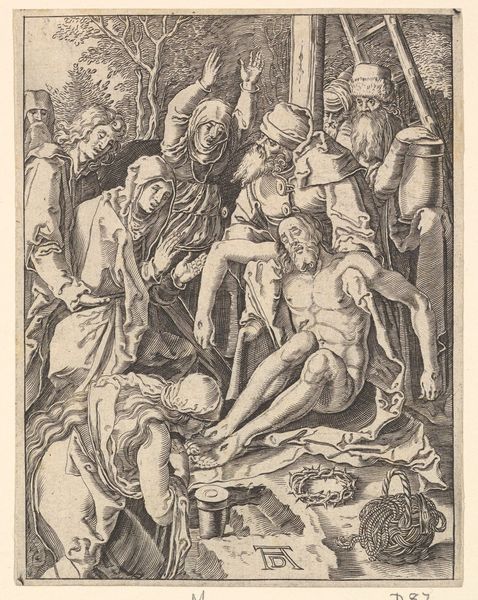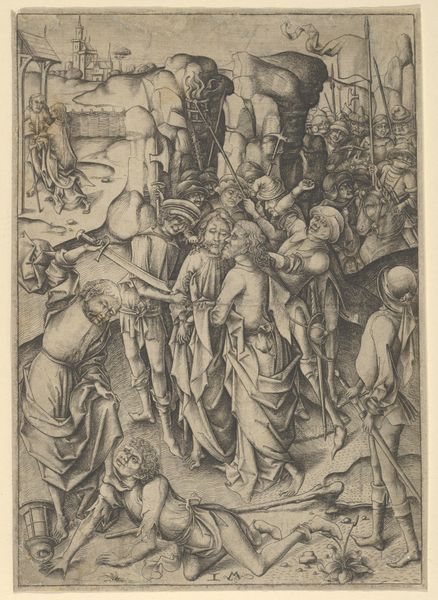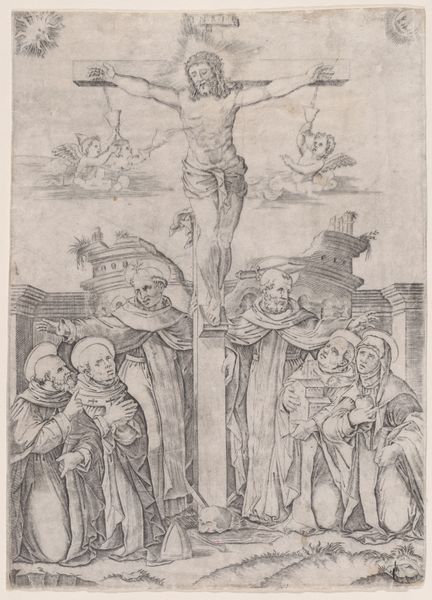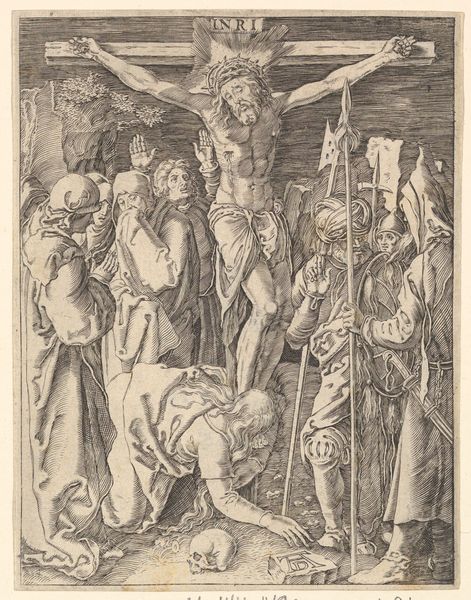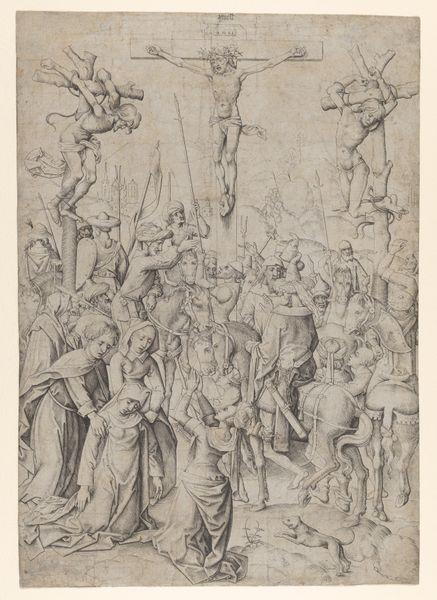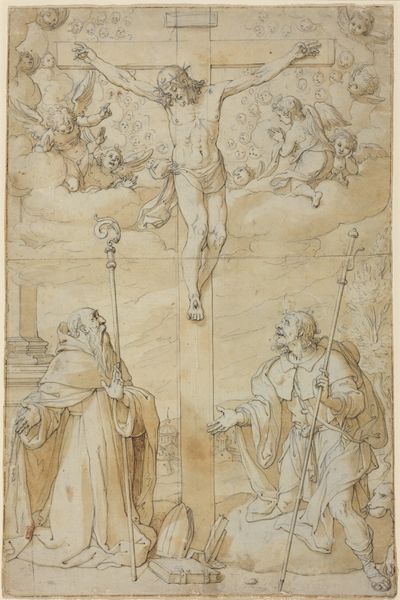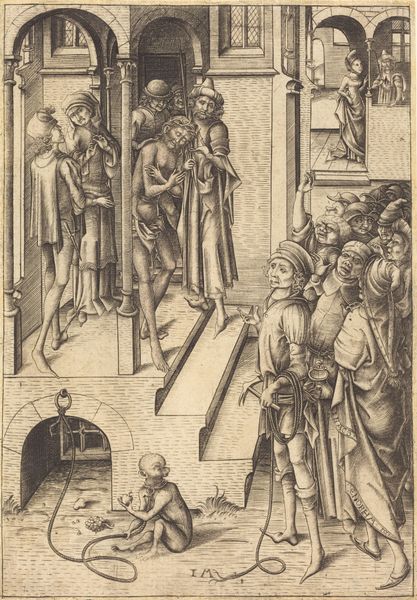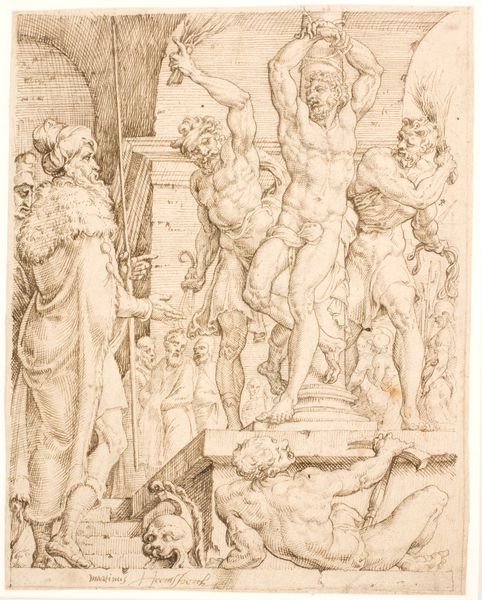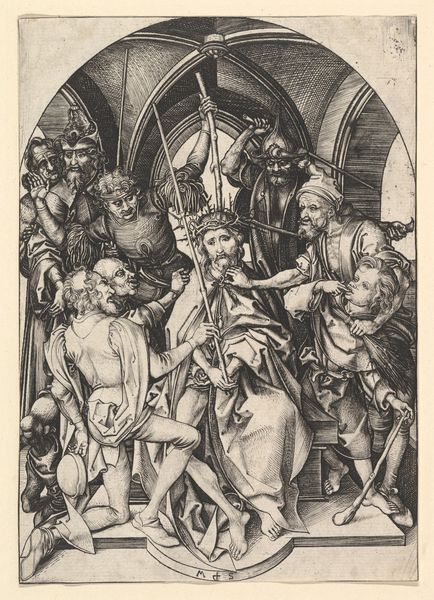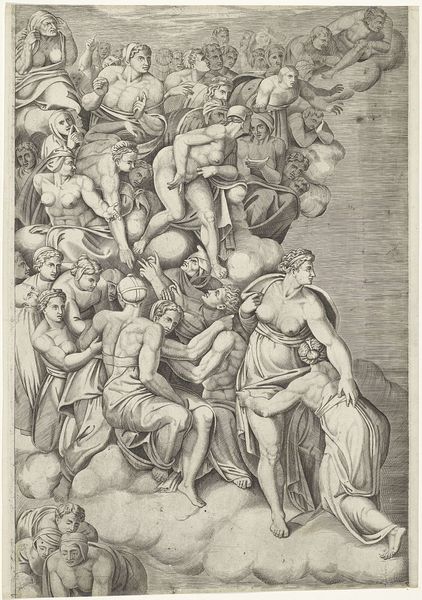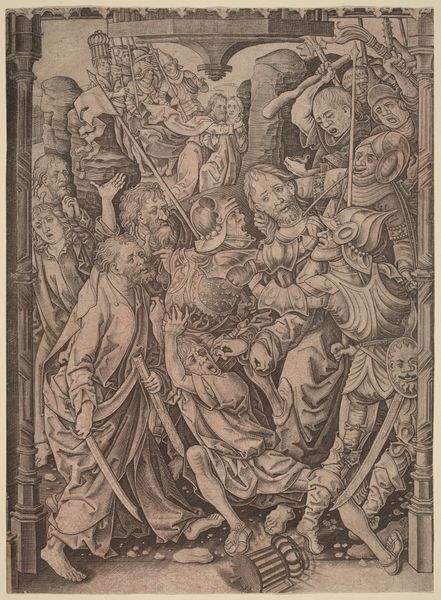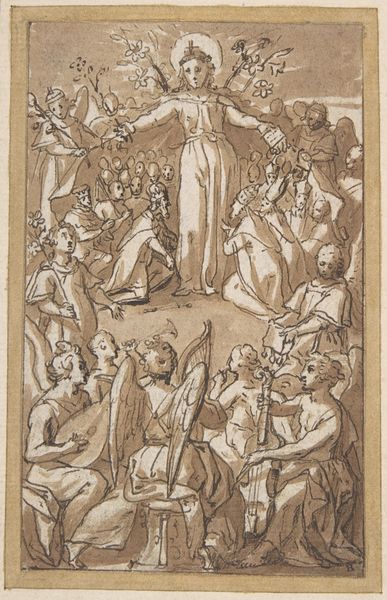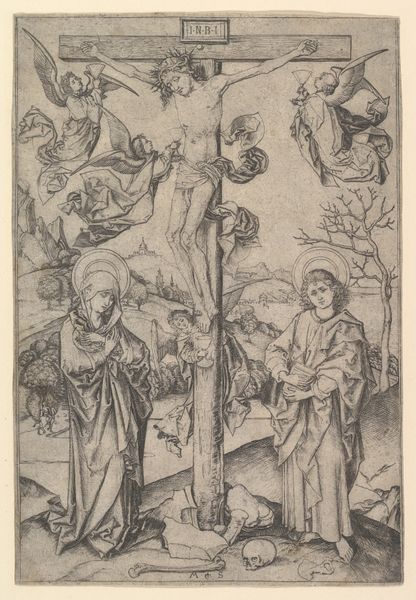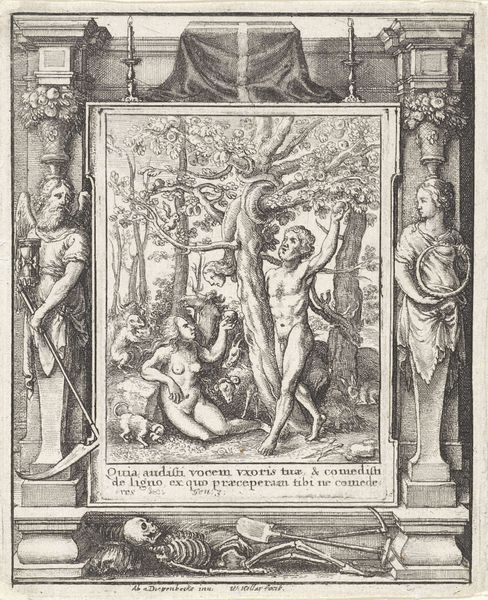
drawing, ink, engraving
#
drawing
#
ink drawing
#
medieval
#
figuration
#
ink
#
crucifixion
#
history-painting
#
northern-renaissance
#
engraving
Dimensions: Sheet: 11 3/4 × 8 1/4 in. (29.9 × 21 cm)
Copyright: Public Domain
Curator: This ink engraving is "The Crucifixion" by Master IAM of Zwolle, created sometime between 1465 and 1495. It resides here at the Met. Editor: It's stark. The starkness of the black and white and the emotional agony are right there on the surface. Curator: The power in this image, particularly given the context of the late fifteenth century, lies in its dramatic presentation of the Passion. Look at how IAM situates Christ's suffering within a broader commentary on power. Editor: The composition is interesting. The crosses are foregrounded and crowded, and in the background, you almost miss the village behind the crosses. I'm trying to understand what role this work might have played at the time of its creation in depicting trauma or religious faith. Curator: That's a critical point. Zwolle, as a prominent artistic center in the Northern Renaissance, witnessed diverse artistic engagements with faith. IAM's engraving engages with earlier Netherlandish artistic traditions that were centered on capturing genuine emotions, placing the focus squarely on the physical and emotional anguish of Christ and those around him. The engraving medium made it far more accessible. Editor: It makes me consider whose voices are included. The women at the base of the cross certainly play a very specific, performative role. Are their expressions of grief presented in a genuine manner, or is there an artificiality given their position relative to the male figures in the scene? Curator: I appreciate how you are highlighting that this isn’t just a religious depiction; it is also an examination of power structures. IAM offers us a glimpse into the complex performance of grief, gender dynamics, and religious authority. Editor: Looking at this, and knowing the social context, reminds me that art doesn't just depict history, it actively participates in it. Curator: Indeed, art becomes a historical actor itself, constantly reshaping the narrative. Thank you for that illuminating perspective.
Comments
No comments
Be the first to comment and join the conversation on the ultimate creative platform.
